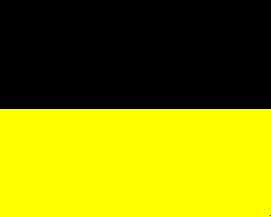


When the infamous Oath of Allegiance to the Provisional Council of State was demanded in July 1917, Puchalski agreed to have his troops take the oath, but the majourity of them refused, and soon afterward, his Legion was disbanded for lack of qualified members. Puchalski himself was not required to take the oath, for he was already an Austrian officer who had sworn an oath to the Kaiser. The entire Polish Legion was reorganized into the Polish Auxiliary Corps under chief of staff Oberst Stanislaus Graf von Szeptycki. Meanwhile, Puchalski was appointed commander of the 12. infantry division in late summer 1917 and sent to northern Italy, where he took part in the Caporetto Offensive of 24 October 1917. He later took part in the Piave Offensive of 15 June 1918. Puchalski was then replaced by FML Waitzendorfer and transferred to Przemysl, where he was in charge of garrison troops.
On 1 November 1918, the Polish Regency Council appointed FML Puchalski to be Senior Commander of the Polish National Army for Galicia and Austrian Silesia. At this time, Puchalski was in the fortress of Przemysl and ordered the Polish flag raised over the citadel. On the night of 4 November, Ukrainians armed by Galicia’s governor Graf von Huyn moved against Przemysl and seized the part of town east of the San river. In so doing, they arrested the few Polish soldiers and also took hold of Puchalski; Colonel Wladyslaw Sikorski, then his chief of staff, avoided them and in the dead of night slipped over to the other side of town to rally support.
Meanwhile, the Ukrainians were joyous, proclaiming the city part of the Western Ukraine, though unable to capture the western half after a day-long struggle. Indeed, their merriment did not last long, as reinforced Polish units called “Group San” arrived on the scene a week later, ousted the Ukrainians, and freed Puchalski. At the time, Sikorski was being flown to Przemysl to witness the fighting on 13 November, but his plane was shot at by the Ukrainians, and crashed in flames. Sikorski managed to escape the wreckage. Polish units moved toward Lemberg (Lwow) and captured it within two weeks, driving the Western Ukraine government of Simeon Petrushevich to Stanislau, where he proclaimed the union of the two Ukraines.
Stanislaus Puchalski died in 1935.
GWS, 10/03 [rev. 11/05]
Attention: Visit FEEFHS map room for a Map of Galicia including some of the placenames mentioned here. Also, see the Map of Volhynia including Lutsk and Kowel (on the far left), and a Map of the Southwestern Theatre, though its missing Caporetto. Be sure to open in a separate window to toggle between this page and FEEFHS.
Immediately preceding the Dunajec offensive
Deutsche 11. Armee, preuß. Generaloberst August v. Mackensen
Chief of Staff, preuß. Oberst Seeckt
Öst. VI. Korps, Kmdt. Feldmlt. v. Arz
Chief of Staff, Oberst Josef Huber
12. inf. div., Feldmlt. Kestranek
23. inf. brig., Genmj. Ritt. v. Metz
24. inf. brig., Genmj. v. Puchalski
12. field art. brig., Oberst v. Dobner
Orders of Battle: Polish Legion, 1 March 1916
Immediately following GM Puchalski's arrival
4. Armee, GO Erzherzog Josef Ferdinand
Hauer kav. Korps, GdK Leopold v. Hauer
Polnisch Legion, GM Stanislaus v. Puchalski
1. Brigade, Jozsef Pilsudski
1. Battle Group, Eduard Rydz-Smigly (1886-1941)
5. Battle Group, Leon Berbecki (1875-1963)
7. Battle Group, Albin Satyr-Fleszar (1888-1916)
2. Brigade, Ferdynand Küttner (replaced by Zygmunt Zielinski (1858-1925))
2. Battle Group, Marian Zegota-Januszajtis (1889-1973)
3. Battle Group, Henryk Minkiewicz (1880-1940)
3. Brigade, Wiktor Grzesicki
4. Battle Group, Boleslaw Roja (1876-1940)
6. Battle Group, Mieczyslaw Norwid-Neugebauer (1884-1954)
Orders of Battle: Eastern Front, June 1916
Immediately preceding the Russians’ Lutsk Offensive
Linsingen Group, Gen. d. Inf. von Linsingen
4. Armee, Generaloberst Erzherzog Josef Ferdinand
Hauer kav. Korps, Gen. d. Kav. von Hauer
11. Honved kav. div., Genmj. Czito
9. kav. div., Feldmlt. von Leonhardi
Poln. Legion, Genmj. v. Puchalski
Orders of Battle: Eastern Front, July 1916
Immediately following the Lutsk breakthrough
Army Group Linsingen, Gen. d. Inf. von Linsingen
4. Armee, Generaloberst von Tersztyánszky
Hauer kav. Korps, Gen. d. Kav. von Hauer
Polish Legion, Genmj. von Puchalski
11. Honved kav. div., Genmj. Czito
1. kav. div., Genmj. de Ruiz
9. kav. div., Feldmlt. von le Gay
Orders of Battle: Eastern Front, August 1916
Immediately following the Russians’ Kowel Offensive
Army Group Linsingen, Gen. d. Inf. von Linsingen
4. Armee, Generaloberst von Tersztyánszky
Fath Korps, Gen. d. Inf. Fath
Kneußl Group, Genlt. von Kneußl
Polish Legion, Genmj. von Puchalski
Orders of Battle: Roumanian and Eastern Front, November 1916
Immediately following the occupation of Wallachia by the Alliance troops
Linsingen Army Group, Gen. d. Inf. von Linsingen
Woyrsch's Army Group, XII. Korps, Gen. d. Inf. von Henriquez
35. inf. div., Feldmlt. von Podhorajsky
Polish Legion attached, Genmj. von Puchalski
Orders of Battle: Italian Front, November 1917
Immediately preceding the Caporetto Offensive
Erzherzog Eugen Armee Front, Feldmarschal Erzherzog Eugen
Boroevic Armee Group, Generaloberst von Boroevic
1. Isonzo Armee, Generaloberst von Wurm
XXIII. Korps, Feldmlt. von Csicserics
41. Honved inf. div., Feldmlt. Schamschula
10. Honved inf. div., Feldmlt. von Gologorski
12. inf. div., Genmj. von Puchalski
21. Schützen res. div., Feldmlt. Podhajsky
Orders of Battle: Italian Front, mid-June 1918
Immediately preceding the Piave Offensive
Boroevic Army Group, Feldmarchal Boroevic von Bojna
Isonzo Army, Generaloberst von Wurm
XXIII. Korps, Gen. d. Inf. von Csicserics
12. inf. div., Feldmlt. von Puchalski
10. inf. div., Feldmlt. von Gologorski
1. kav. div., Genmj. von Habermann
res., 57. inf. div., Feldmlt. von Hronzky
